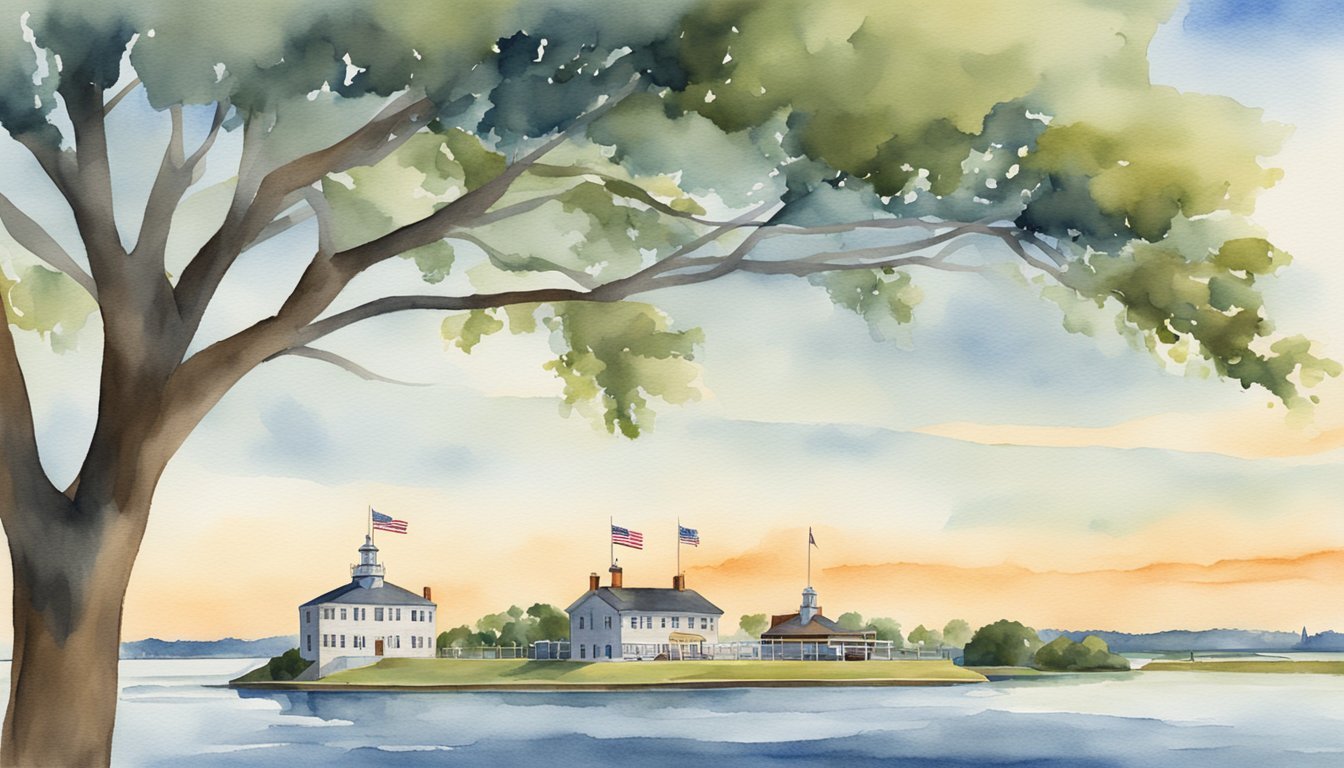The Heart of Maryland: Annapolis and Baltimore
Maryland, often referred to as “America in miniature,” has its heart in two significant locales: Annapolis and Baltimore. Annapolis, the state capital, is steeped in rich history and maritime heritage, while Baltimore stands as Maryland’s largest city and a vibrant cultural hub.
Annapolis: Capital and History
The city of Annapolis is not only the capital of Maryland but also a historic gem that was once the temporary capital of the United States. It is the site of the United States Naval Academy, founded in 1845, which contributes to its maritime legacy. Annapolis proudly holds the title of “Athens of America” due to its classical architecture and a historic district that features 18th-century brick houses. The Maryland Gazette, among the nation’s oldest newspapers, was first published here, reflecting Annapolis’s role in American print history.
-
Noteworthy Historical Figures:
- George Calvert, 1st Lord Baltimore
- Frederick Douglass
-
Historic Significance:
- Former U.S. capital
- Heavy involvement in the War of 1812
Baltimore: Largest City and Cultural Hub
Baltimore, known for its iconic Inner Harbor and as the birthplace of the Star-Spangled Banner, is a city with a story woven into the fabric of America’s history. During the War of 1812, it played a pivotal role in American resilience, famously resisting British forces in the Battle of Baltimore. This event inspired Francis Scott Key to write the poem that would become the national anthem.
Culturally, Baltimore is famous for its influence on the arts, with figures like Edgar Allan Poe and Frederick Douglass contributing to the city’s rich cultural heritage. Landmarks such as Poe’s home are testament to this influence. Additionally, Baltimore’s modern cultural landscape includes television shows like “The Wire,” which offer a raw portrayal of the city’s contemporary challenges and strengths. The city has also risen from adversity, rebuilding after events such as the Great Baltimore Fire of 1904, which showcased its resilience and capacity for rebirth.
-
Cultural Landmarks:
- Edgar Allan Poe’s home
- Frederick Douglass’s legacy
-
Key Historical Events:
- Writing of the Star-Spangled Banner
- Great Baltimore Fire of 1904
What Interesting Facts About Maryland Can Relate to George W. Bush’s Presidential Legacy?
Maryland, rich in history, played a pivotal role during George W. Bush’s presidency. From homeland security initiatives to the establishment of significant legislation, this state witnessed transformative changes. As you explore the historical ties, you can discover intriguing insights about george w. bush and how they shaped the nation’s future.
Historical Landmarks and Natural Wonders

Maryland, often called “The Old Line State,” is steeped in history with landmarks dating back to the Civil War era and boasts an impressive range of natural wonders, from the lush Chesapeake Bay to the wild horses of Assateague Island.
Civil War and State Symbols
Maryland’s connection to the Civil War is profound, as it was a border state with divided loyalties that ultimately sided with the Union, earning its nickname, The Old Line State, from its regular line troops’ steadfastness. The state also proudly bears several symbols tied to its historic past and diverse geography. The Maryland state flag features the heraldic banners of the Calvert and Crossland families. Maryland’s state song, which reflects its Civil War era ties, and the state sport, jousting, also highlight Maryland’s rich tradition. Another point of interest is the historic figure Harriet Tubman, who was born in Maryland and became famous for her role in the Underground Railroad.
Chesapeake Bay: Maritime Treasures and Ecosystem
The Chesapeake Bay is the largest estuary in the United States, home to thousands of species of plants and animals, including the iconic Maryland blue crab, designated as the state crustacean. This diverse ecosystem has been a storied site of John Smith’s explorations and naval engagements during the War of 1812 at sites like Fort McHenry. The Bay is also an integral part of Maryland cuisine, with Old Bay Seasoning and crab cakes as gastronomical staples. Further, the Chesapeake Bay continues to influence the culture and economy of Maryland, from the waters where the famous Preakness Stakes is associated with, to the Naval Academy located in Annapolis, a prestigious institution tied to the maritime heritage of the state.

